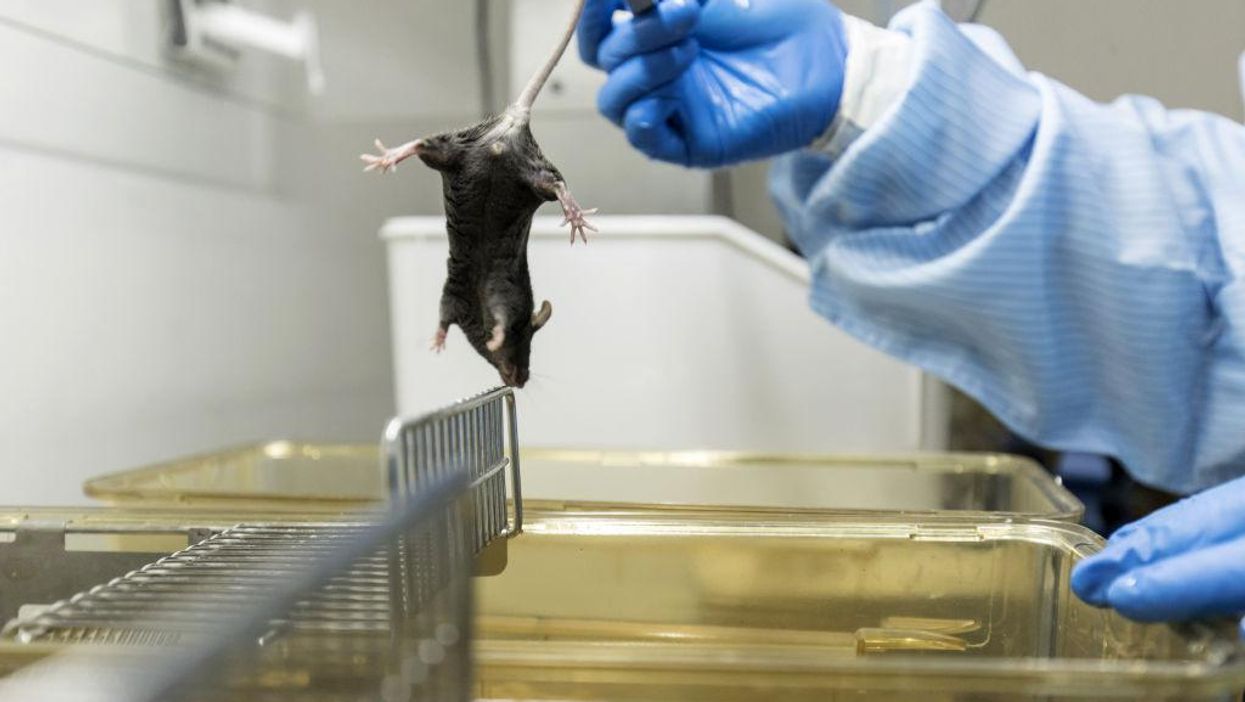
Qilai Shen/Bloomberg via Getty Images

The Chinese military reportedly "engineered mice with humanized lungs" to test viruses on them in 2019, just months before the coronavirus pandemic erupted. The researchers with the Chinese military studied the humanized lungs to evaluate their "susceptibility to SARS-CoV-2," according to the bombshell report from Vanity Fair, which investigated the origin of coronavirus.
Vanity Fair investigative reporter Katherine Eban released a "months-long investigation" into the origin of COVID-19. The investigation includes interviews with over 40 people, hundreds of pages of U.S. government documents, internal memos, meeting minutes, and email correspondence. Eban noted that she found "conflicts of interest" including large U.S. government grants "supporting controversial virology research, known as 'gain-of-function.'" Eban said the conflicts of interest "hampered" the investigation into the coronavirus origins by the United States government.
The report noted there were "two main teams inside the U.S. government working to uncover the origins of COVID-19: one in the State Department and another under the direction of the National Security Council."
"No one at the State Department had much interest in Wuhan's laboratories at the start of the pandemic, but they were gravely concerned with China's apparent cover-up of the outbreak's severity," Eban wrote. "The government had shut down the Huanan market, ordered laboratory samples destroyed, claimed the right to review any scientific research about COVID-19 ahead of publication, and expelled a team of Wall Street Journal reporters."
"You had Chinese [government] coercion and suppression," said David Feith of the State Department's East Asia bureau. "We were very concerned that they were covering it up and whether the information coming to the World Health Organization was reliable."
Thomas DiNanno, former acting assistant secretary of the State Department's Bureau of Arms Control, Verification, and Compliance, reportedly wrote an internal memo to his staff that State Department officials "'warned' leaders within his bureau 'not to pursue an investigation into the origin of COVID-19' because it would 'open a can of worms' if it continued.'"
"As the group probed the lab-leak scenario, among other possibilities, its members were repeatedly advised not to open a 'Pandora's box,' said four former State Department officials," according to Vanity Fair. "The admonitions 'smelled like a cover-up,' said DiNanno, "and I wasn't going to be part of it."
The Vanity Fair piece noted that Xi Jinping "announced a plan to fast-track a new biosecurity law to tighten safety procedures throughout the country's laboratories" on February 14, 2020, which was allegedly a "surprise" to the National Security Council.
The NSC zeroed in on one particular study first submitted in April 2020, in which "11 of its 23 coauthors worked for the Academy of Military Medical Sciences, the Chinese army's medical research institute."
The 11,000-word Vanity Fair exposé highlighted the study, which purportedly "engineered mice with humanized lungs" in 2019 to test viruses on them.
Using the gene-editing technology known as CRISPR, the researchers had engineered mice with humanized lungs, then studied their susceptibility to SARS-CoV-2. As the NSC officials worked backward from the date of publication to establish a timeline for the study, it became clear that the mice had been engineered sometime in the summer of 2019, before the pandemic even started. The NSC officials were left wondering: Had the Chinese military been running viruses through humanized mouse models, to see which might be infectious to humans?
NSC investigators reached out to other intelligence agencies about the curious research, but they were "dismissed," according to Anthony Ruggiero, the NSC's senior director for counterproliferation and biodefense.
"In one State Department meeting, officials seeking to demand transparency from the Chinese government say they were explicitly told by colleagues not to explore the Wuhan Institute of Virology's gain-of-function research, because it would bring unwelcome attention to U.S. government funding of it," Eban wrote.
The article placed a spotlight on Shi Zhengli, the lead coronavirus researcher at the Wuhan Institute of Virology who is known as "Bat Woman." Shi Zhengli allegedly received $665,000 from the National Institutes of Health between 2014 and 2019. "Shi's own comments to a science journal, and grant information available on a Chinese government database, suggest that in the past three years her team has tested two novel but undisclosed bat coronaviruses on humanized mice, to gauge their infectiousness," Vanity Fair reported.
Shi has denied that COVID-19 emerged from the WIV lab or that the facility conducts military research.
Dr. Richard Ebright, board of governors professor of chemistry and chemical biology at Rutgers University, said there are only three laboratories in the entire world that have an "extensive collection of bat viruses, doing some of the most aggressive research:" Galveston, Texas; and Chapel Hill, North Carolina; and the Wuhan Institute of Virology in China.
Former Centers for Disease Control and Prevention Director Robert Redfield told Vanity Fair that death threats "flooded his inbox" after he dared to say that he believed that the coronavirus pandemic originated from the Wuhan lab and did not evolve naturally.
In April 2020, then-President Donald Trump said he had seen classified information indicating that COVID-19 originated from the Wuhan Institute of Virology. The Vanity Fair article blamed former President Trump for presenting the lab leak theory, which Eban said "poisoned the waters for anyone seeking an honest answer to the question of where COVID-19 came from," and was "linked to destructive nativist posturing."